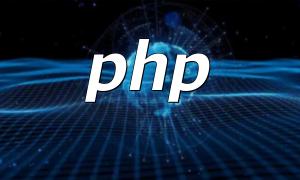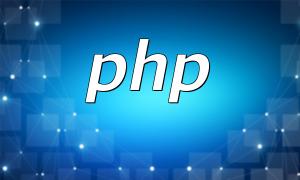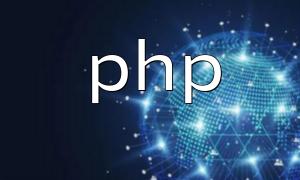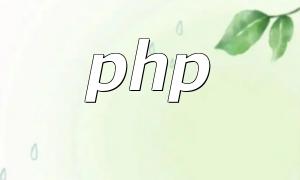In modern web development, managing and storing large amounts of data is essential. With the rise of mobile applications and cloud computing, more data is stored in databases in JSON (JavaScript Object Notation) format. PHP, a popular server-side language, offers the PDO (PHP Data Object) extension, which provides a convenient way to work with databases. This article will guide you on handling JSON data in databases using PHP and PDO.
First, ensure that the PHP environment has the PDO extension installed along with the required database driver (such as MySQL or SQLite). Then, you can use PDO to connect to the database and execute SQL statements to manipulate data.
When working with JSON in databases, PDO prepared statements allow you to safely pass and read JSON values. The following example demonstrates how to insert JSON data into a database:
<?php
// Assume we are already connected to the database, $pdo is the PDO object
$data = [
'name' => 'John Doe',
'age' => 30,
'email' => 'john@example.com'
];
// Convert PHP array to JSON string
$jsonData = json_encode($data);
// Insert JSON data using prepared statement
$stmt = $pdo->prepare("INSERT INTO users (data) VALUES (:data)");
$stmt->bindParam(':data', $jsonData);
$stmt->execute();
?>This code converts a PHP array containing user information to a JSON string and inserts it into a 'users' table. Using PDO prepared statements effectively prevents SQL injection.
After fetching JSON data from the database, you can decode it into a PHP array for further manipulation:
<?php
// Assume we are already connected to the database, $pdo is the PDO object
// Query JSON data using prepared statement
$stmt = $pdo->prepare("SELECT data FROM users WHERE id = :id");
$stmt->bindParam(':id', $userId);
$stmt->execute();
// Decode JSON string into PHP array
$result = $stmt->fetch();
$data = json_decode($result['data'], true);
// Print user information
echo "Name: " . $data['name'] . "<br>";
echo "Age: " . $data['age'] . "<br>";
echo "Email: " . $data['email'] . "<br>";
?>This code queries JSON data for a specific user using prepared statements, decodes it into a PHP array, and allows access to the user's information through array keys.
PDO can also be used to update JSON data. Here is an example:
<?php
// Assume we are already connected to the database, $pdo is the PDO object
// New user information
$newData = [
'name' => 'Jane Smith',
'age' => 35,
'email' => 'jane@example.com'
];
// Convert PHP array to JSON string
$jsonData = json_encode($newData);
// Update JSON data using prepared statement
$stmt = $pdo->prepare("UPDATE users SET data = :data WHERE id = :id");
$stmt->bindParam(':data', $jsonData);
$stmt->bindParam(':id', $userId);
$stmt->execute();
?>Simply convert the new PHP array to a JSON string and bind it to a prepared statement to safely update a user's JSON data.
Using PHP and PDO, you can efficiently and flexibly handle JSON data in databases. Prepared statements not only prevent SQL injection but also make it easy to insert, query, and update JSON. Mastering these techniques will greatly improve your ability to work with JSON data in PHP development.









